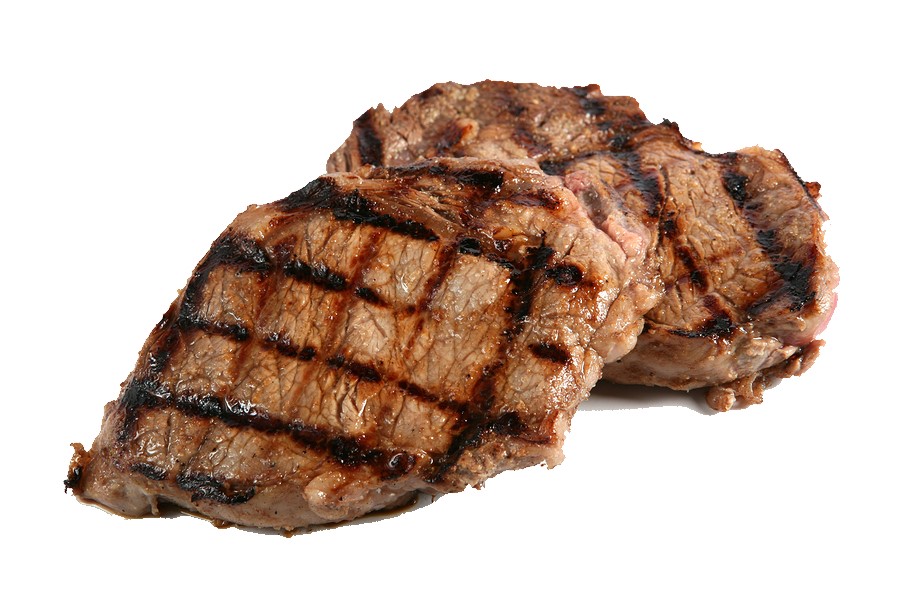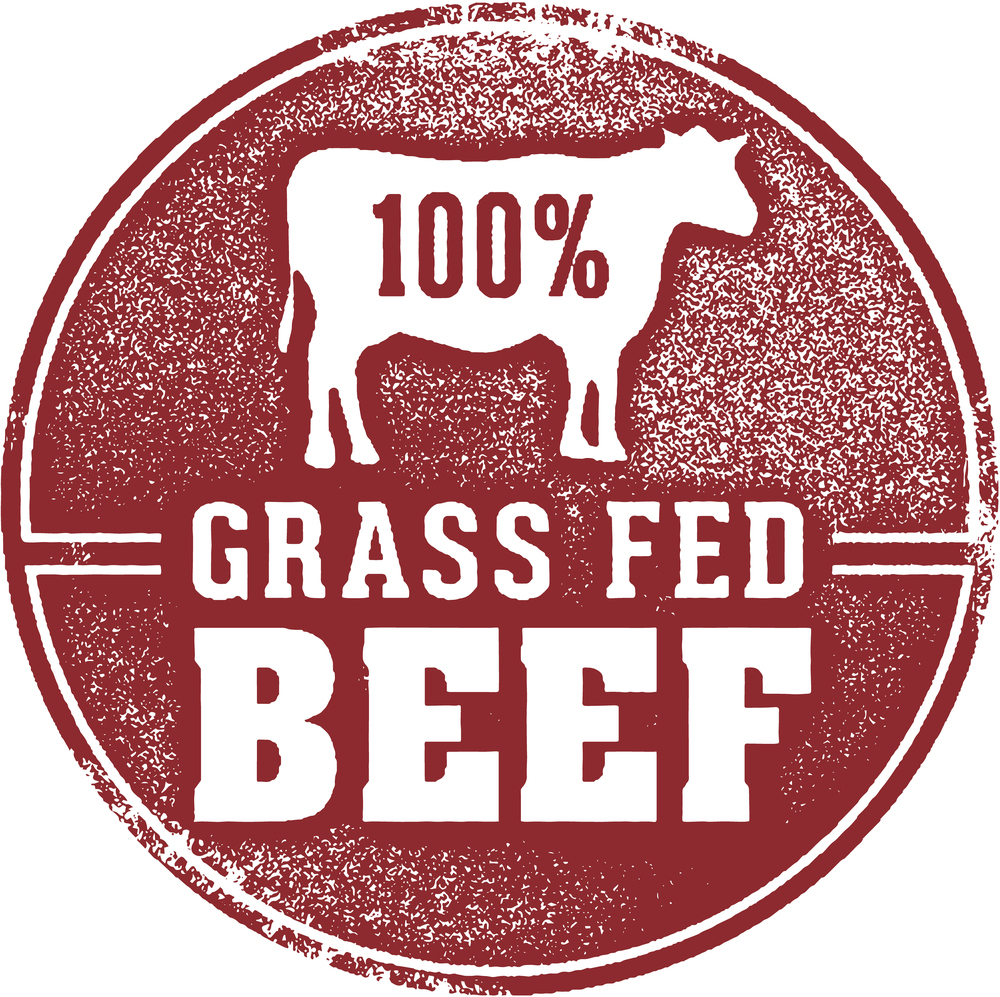Keto: the Answer or a Plunge into the Diet Abyss?

You’ve heard that “Keto” is the solution to all of your weight loss woes? Fat will leave you, abs will arrive, and the whole world will be a better brighter place?
Then you need to create “ketones.”
In order to get into a state where significant ketone bodies are being produced and are actively traveling in your bloodstream, you have some work to do.
The first step, if your only goal is to “get into ketosis” is a simple one.
 Take a forkful of lamb or a juicy pork chop. Wrap it in cheese. Then put butter all over it and wrap it in a nice hunk of fried bacon and a rich green leaf of romaine lettuce. Dip it in coconut oil, eat it, then do it again. A few hours later, repeat.
Take a forkful of lamb or a juicy pork chop. Wrap it in cheese. Then put butter all over it and wrap it in a nice hunk of fried bacon and a rich green leaf of romaine lettuce. Dip it in coconut oil, eat it, then do it again. A few hours later, repeat.
For those reading this who are already foaming at the mouth, not from the meal fantasy I just outlined but because they’re reactively jacked to defend their commitment to keto, please don’t mistake my absurd example as a representation of what I honestly believe a ketogenic dieter would be directed to do. Just know this. If the goal were to get into ketosis, my absurd suggestion would “work.”
Allow the article, intended to provide balanced education, to begin . . . now.
WHAT DO WE NEED TO KNOW ABOUT KETO?
by Phil Kaplan
We live in a polarized society, on one side Evangelists, on the other side Naysayers. This is glaringly apparent in politics, but second only to the attachment factor in the realm of political candidates is the one that inhabits the exercise and eating universe.
“High Intensity is THE BEST way of training” vs. “High Intensity is dangerous.”
In one corner, the “it’s great” die-hards, in the other the “it sucks” buzzkillers.
Before I get into the meat of the article (OK, that “meat” reference WAS intentional), let’s get clear on a simple starting point.
If we seek practical wisdom,
we cannot limit our scope to the categories of
“Good” and “Bad.”
If you’ve landed here because you want a simple answer to the question, “is a ketogenic approach to weight loss good?” I politely urge you to go somewhere else. I can’t, in good conscience, give it a “side.”
- Some diets are ideal for some people
- Some exercise protocols are therapeutic for some that may make up a given segment of the marketplace.
- Some eating plans have some virtue and some are valid as short term explorations while others come with far greater risk than potential for reward.
Finding dietary solutions isn’t about “good or bad” in the abstract. It’s more about, “who are you?,” “what is your situation?,” “what are your goals?,” and “how far are you willing to go to achieve them?”
Don’t worry. I’m getting to Keto, and I’ll address what I believe to be the facts (peppered with a few opinions) shortly.
In order to present a complete picture that allows you to form a clear assessment and evaluation, the “who are you,” “what is your situation” etc. questions are a necessary prerequisite.
Without the answers to those questions, nutrition becomes a puzzle, a convoluted maze, and most approaches are nothing more than a guessing game. If you want answers, get ready to commit to a bit of education right here and now. I’ll keep it simple, but we’re going on an exploration.
Still with me? Are you ready to explore? OK, then read on . . .
“WHAT SHOULD WE EAT?” HAS BECOME UNNERVINGLY COMPLICATED. LET’S SIMPLIFY.
 We know that nutrients supply us with material from which to build new healthy cells, we know that nutrients provide us with metabolic fuel, and we know that the human body has a miraculous intelligence that drives it to make endocrine and biochemical shifts to adapt to even radical dietary deviations. The human body and mind come equipped with an innate genius fostering a natural knack for survival.
We know that nutrients supply us with material from which to build new healthy cells, we know that nutrients provide us with metabolic fuel, and we know that the human body has a miraculous intelligence that drives it to make endocrine and biochemical shifts to adapt to even radical dietary deviations. The human body and mind come equipped with an innate genius fostering a natural knack for survival.
Already beyond, “Is Keto good or bad?” we’ll set out to understand what “Keto” is, why it’s a hot trend, and what realities are important to understand before anyone digs their heels into the Keto-vangelist Corner.
(Definition: ke·to·van·ge·list: a human being so convinced that “keto is the way” his or her rational mind is clouded by fanatical attachment)
In the arsenal of most Ketovangelists you’ll find some hard indisputable realities.
They aren’t making things up. They honestly believe. They just, in most cases, aren’t acknowledging what we might call “the whole picture.”
 Competent health practitioners who, in good conscience, prescribe ketogenic pursuits for the bulk of their clients and patients, recognize the hard-line truths and espouse them with regularity. Along with the “high-fat low-carb” recommendations come explanations of “good fats,” the benefits of grass-fed meats, simple sugar avoidance, and the importance of probiotic cultivation.
Competent health practitioners who, in good conscience, prescribe ketogenic pursuits for the bulk of their clients and patients, recognize the hard-line truths and espouse them with regularity. Along with the “high-fat low-carb” recommendations come explanations of “good fats,” the benefits of grass-fed meats, simple sugar avoidance, and the importance of probiotic cultivation.
Let’s not believe, however, that in order to benefit from the virtues of bone broth, fermented foods, and the elimination of sugar, you have to “Go Keto.” Those truths are valid whether or not your eating plan involves a daily sweet potato or it relies on a predominance of high-fat foods.
THE “ASSOCIATION FLAW”
The “Association Flaw” is a long-standing source of misinformation and delusion. If you believe something “works” because an element of it has benefit, you’re easily victimized by chocolate sellers promising you antioxidants and wine sellers promising their wares are “good” for restored youth.
In a world of depleted soil, genetically modified foods, and far more accessibility of processed food than we might ever consider healthful, there are practices that, whether or not you follow a strict dietary prescription, can be unanimously deemed as wise.
The question at hand is, if you seek fat loss, energy and performance improvement, and all around betterment, and the universe seems to be calling you to Keto, “is that the best course for you?”
 WHO MIGHT “KETO” BE “GOOD” FOR?
WHO MIGHT “KETO” BE “GOOD” FOR?
There are specific demographics in which we might find a large percentage of affirmative responses to the “is it the best course” question. While I’ll only loosely use the word “good” to describe the value of any diet to any single person or population, I can make the case that a measured and regularly assessed ketogenic diet approach might be effective, even corrective for the following individuals:
- A hard training well-conditioned metabolically sound athlete seeking heightened leanness and willing to maintain a calorically dense diet with rigid discipline
- A child or adult with a diagnosed seizure disorder guided through the diet via medical supervision
- An individual suffering extreme compromise from chronic disease, inflammation, and metabolic degradation in a state of desperation and fostering a strong level of compliance
- An individual battling cancer using the ketogenic diet as a complement to either conventional or alternative treatment and care
- An obese individual with a qualified coach (medical or otherwise certified in a health or nutritional discipline), accountability, and a willingness to accept this as a vehicle and not a long-term solution
- A weight loss wanter with extreme discipline and a willingness to gauge physical, emotional, and biochemical shifts and make alterations as biochemical variations are interpreted and responded to
I know. My list seems . . . ummm . . . “specialized.” There’s a reason for that.
I personally have experience with individuals in each identified demographic who found betterment using a ketogenic approach. On a larger scale, however, I’ve seen self-described failure, clinical failure, residual weight gain, complete abandonment, emotional turmoil, and long-term reductions in performance and some of the biomarkers of health.
I’m being specific because it would be unfair to put a blanket over the issue. It plays itself differently among different individuals with varied needs.
At this point it probably makes sense to share a small bit of “Keto History” and answers to some of the more basic questions.
HISTORY
Hippocrates, Socrates, and Aristotle all held reverence for the ability the body has to heal. They recognized that fasting, removing the "stress" of digestion and input of exogenous compounds, accelerated and amplified the activity of the body's innate healing power. While Western society and Allopathic Medicine may appear to have forgotten the lessons of the ancients, note that the Greek God Hermes holds "the Caduceus," the symbol of Western Medicine today. Perhaps medicine "forgot" some of the greatest lessons of the ages.
Since ancient times, in every culture, fasting was seen to have curative benefits. Only recently has science truly come to understand the role of the digestive tract in cellular health and this new understanding allowed for a deeper recognition of how specific fasts can remedy an array of symptoms and ailments.
Epilepsy and seizure disorders appeared to respond favorably to diets that limited sugar and delivered an abundance of fats and in the early 20th Century, the ketogenic diet was introduced as a treatment for pediatric epilepsy.
This dietary approach was, in a sense, a "glucose fast," the removal of foods that provide the body with an ample supply of molecular sugar.
Fascination increased in the medical community but in time, anti-convulsion drugs were developed and pharmacology replaced the growing interest in a novel dietary approach (perhaps even back then, people "just wanted the drug").
WHY WOULD A SEIZURE-REDUCING DIET BECOME A HOT TREND 100 YEARS LATER?
If we’re going to attempt to understand how an extreme dietary shift can affect the brain, we’d have to know that while muscle cells and metabolic processes rely upon glucose (carbohydrate) and fat as their source of fuel, the brain cannot use fat as an energy source.
Under normal metabolic conditions the brain requires a steady stream of glucose for optimal function.
As a part of the innate miraculous survival mechanism I alluded to earlier, the brain, in alliance with the liver, has a backup system it calls upon when the intake of energy substrates changes. In an extreme case, where glucose is simply not available, the liver can perform a conversion using fatty acids as raw material to produce ketones.
Ketone bodies can replace glucose as brain fuel.
So . . . we now understand where the word “Keto” comes from. Ketones are produced in a carbohydrate deprived state.
 KETONES COME FROM FAT
KETONES COME FROM FAT
Begin a diet of meat, nuts, heavy cream, and butter, and you amplify the raw material the liver can convert. In a carb-depleted state, the brain needs the liver’s specific ketone output, and in order to satisfy the needs of the brain, the LIVER NEEDS FAT!
In the 21st century, with obesity at an all-time high, it makes sense that a diet that increases the body’s utilization of fat would gain some public attention.
KETOSIS DEFINED
If we’re going to define Ketosis, we’d have to identify it as an altered metabolic state. Here’s where the polarization raises its ugly head.
- Ketovangelists call it “a normal metabolic state”
- Keto Buzzkillers reference it as “a pathological state” or “an indication of disease.”
I won’t give credence to either. I’ll simply offer an unbiased definition.
Ketosis is a metabolic state where ketone bodies, produced by the liver, are used to meet energy demands as an alternative to glycolysis where energy needs are predominantly met by glucose.
NOW ON TO THE QUESTION OF WEIGHT REDUCTION
Moving forward, let’s get on to the bigger question at hand. If, via a ketogenic dietary approach, you achieve a sustained state of ketosis, will you lose weight?
In all likelihood, yes.
There are variables that can impede cellular fat release even with a ketogenic diet in place, but most achieving an extended state of ketosis will reduce body fat.
If we stopped here, anyone seeking fat loss would certainly be encouraged.
There’s more to understand.
Let’s go to this question . . .
How do you achieve a state of ketosis?
 The popular keto-based diets typically ask you to consume meat (competent and informed health and nutrition professionals will specific “Grass-Fed”) such as beef, lamb, game, or pork, poultry including fatty parts of the chicken and turkey, seafood (wild caught), eggs, cheese, select oils, avocado, and nuts in “meals” also containing non-starchy fibrous vegetables.
The popular keto-based diets typically ask you to consume meat (competent and informed health and nutrition professionals will specific “Grass-Fed”) such as beef, lamb, game, or pork, poultry including fatty parts of the chicken and turkey, seafood (wild caught), eggs, cheese, select oils, avocado, and nuts in “meals” also containing non-starchy fibrous vegetables.
Grains, breads, pastas, sugars, snack foods, and processed foods are all off-limits and in order for Keto to “work,” they must remain off-limits during the implementation and entire duration of the diet.
Once you “slip” or “cheat,” once you create a restored supply of glucose, you quickly shift back into a “sugar-eating” metabolism. The hypothalamus senses the return of glucose and the “emergency state” is replaced by the familiarity of the presence of nutritionally supplied brain fuel.
Ironically, in a “sugar-eating metabolic state,” you activate erratic shifts in insulin, halt fat release, and in all likelihood, kick fat storage into high gear.
When I was describing the few demographics I’ve seen find great benefit from extended ketosis, I used the word discipline quite a few times. You’re now beginning to understand why.
The shift back from ketosis to glycolysis comes with a shift from “fat release” to “fat storage.”
Have people gone through a Keto period and kept the weight off?
Some have, and my educated guess would prompt me to add in the following . . .
“as long as they continued to avoid processed foods and simple sugars, carefully maintained a balance between energy output and the food they consumed, and held on to healthy habits.”
Outside of the specialized demographics I identified as exceptions, have I met many of those people?
No.
The great majority of people I’ve personally met who have attempted weight loss using a ketogenic approach have experienced residual weight gain, many coming to exceed their pre-Keto weight.
Here’s where I know I’ll prompt heated comments from Ketovangelists. They’ll tell me all of the reasons why those rebounders’ efforts were flawed, they’ll equip me with lots of tips to ensure the weight stays off, and they’ll swear it hasn’t happened to them.
I believe them.
I’m simply sharing what I see, and I’ve been guiding people through the restructuring of body composition for over 30 years. If I believed a ketogenic diet was a solution for the masses, I’d be the first one in the evangelist corner.
In my experience, I can say, with few exceptions, a ketogenic diet will not prove to be a long-term weight loss solution.
Once the onslaught of attackers settles down, I’ll remind readers, I’m not a naysayer. I’m a scientist, a practitioner, and a reporter. I haven’t any agenda other than to empower people and help my clients and audience get the results they seek.
I’ve created nutrition plans proven highly effective that utilize ketogenic “periods” or “cycles,” but in order for the benefit to be lasting, I’ve identified and implemented a number of augmentations and variations.
I want to be careful not to turn this into a pitch for one of my programs. In this essay I simply want to report, but I did feel it important to point out that in my world, manipulating glucose availability IS a PART of a sound and effective program aimed at the long-term.
We’ve now arrived at a vital consideration. “The long-term.”
SEEING BEYOND A MOMENT ON THE SCALE
 We, as a population riddled with the plague of “overweight,” have erroneously learned to judge our progress by a snapshot in time, a reading of the scale, or a series of measurements. In that, most fail to consider the tomorrows yet to come.
We, as a population riddled with the plague of “overweight,” have erroneously learned to judge our progress by a snapshot in time, a reading of the scale, or a series of measurements. In that, most fail to consider the tomorrows yet to come.
A more important question than, “what does the momentary snapshot look like?” is, “What am I programming my metabolism, endocrine system, and physical body for in the days, weeks, and months ahead?”
* * *
As I just laid the groundwork, let’s separate “doing keto” from “sensibly manipulating energy substrates for fat release and metabolic enhancement.”
In a ketogenic state, or in a state of glycogen depletion, where the brain and muscles have limited access to glucose, we can employ exercise strategies that dramatically increase the likelihood of subcutaneous and visceral fat release, and by using specific exercise strategies combined with synergistic nutritional shits, we can move in and out of a “fat release state” without prompting a residual reaction to carbohydrates. In other words, if we can manipulate carb and fat intake for brief periods to leave the brain and cells with limited glucose supply, we can prompt fat release without requiring extended ketosis.
Following each such period with a careful reintroduction of macro-integrated natural slow-release carbohydrates and an exercise program that creates “mitochondrial hunger,” metabolism revs, fat release continues, and we bypass the potential rebound. This strategy has proven remarkably effective for the long term.
When comparing “doing keto” to “manipulating carbohydrate and fat intake strategically for select periods,” you’ll likely find a greater many advantages to pursuing the latter.
With those points made, we can continue on to understand a few more point related to “Keto” and its purported appeal for fat loss and performance.
GETTING TO THE MACROS
While there are variations, the common “keto” diet relies upon near 70% of calories from fat, less than 5% from carbohydrates, and 25% protein.
I want to take a moment to address protein. Protein is “the most thermic” nutrient, and it is the delivery vehicle for amino acids, the building blocks of muscle tissue, thus it gets played up as a hero in many dietary approaches.
With a ketogenic approach, ample dietary protein intake is important for protein synthesis and cellular repair, but more than the recommended 25% can backfire.
The branched chain amino acids, leucine, valine, and isoleucine, can be converted into glucose, and in a carb depleted state, “extra” protein can become brain fuel (through gluconeogenesis) and interrupt the metabolic state that demands ketones. In other words, if you consume too much protein, you lose the fat loss benefits of the high fat dietary approach.
The need for diligent adherence, the potential interruption of a step away from “the plan,” and the societal and disciplinary challenges of sticking to a stringent plan are all strikes against calling keto “a great weight loss diet plan.”
For those who will pursue it, preparedness, full understanding, and time management become important variables.
THE PROCESS OF GETTING THERE
Assuming you are beginning the diet after a period of taking in ample balances of carbs, proteins and fats, you have to coax the ketotic state.
You have glucose in your blood, glycogen in your liver, and glycogen stored in muscle tissue, and these are all sources of the glucose you want to limit.
You’ll begin the process by reducing carbohydrate intake to less than 20 grams per day while eliminating all processed foods, breads, pastas, pastries, and fruit juices.
Even if you exercise, it’s likely you have a 2-day supply of stored glycogen, so best case scenario you can coax the liver to produce ketones 3 days in. That isn’t a guarantee, simply a possibility. It may take up to 7, in some cases 10 days to hit the point of “ketone fueling.”
When you have reduced glucose (brain fuel) you’re going to begin to experience some cognitive compromise and mood shifts. You’ll walk into a room and forget why, look for the keys that you’re holding in your hand, and drive right past your exit on the highway. These are simply outcomes produced by the brain directing its limited energy to life-preservation and sacrificing the “luxuries” of cognition, memory, and reason.
Before you get to the point where the brain reignites due to an alternative fuel, beyond the frustrating lapses, you’re likely to be hungry, brain foggy, and irritable. It’s a small price to pay for weight loss, but it’s almost a given. You have to rely on discipline.
If you typically get sugar cravings, they’ll amplify before they go away.
If it isn’t you, but your spouse or loved one who’s considering keto, just be prepared for a couple of days of unpredictability.
Nothing I’ve just said was intended to discourage you, but rather to prepare you, and with all of that said, there are those who will swear they suffered no compromise at all.
Again, I believe them. I simply find them to be “the exceptions.”
 CAN ALL THAT FAT BE . . . DANGEROUS?
CAN ALL THAT FAT BE . . . DANGEROUS?
Once you’re in ketosis, fat intake becomes vitally important. We can debate, with data serving both sides, whether intake of uncharacteristically high dietary fat is “healthy,” but I’ll be the first to admit we’ve been misled about fat for decades.
Here’s where a bit of basic simple physiology and biochemistry might be in order. With the exception of the brain, the body functions by utilizing a cellular energy substrate, Adenosine Tri-Phosphate (ATP).
ATP is manufactured from fat and/or from carbohydrate in a process called “The Krebs Cycle.” We don’t have to go any deeper than that (although I might a little later).
If fat loss is a goal, and lots of glucose is present, the adipose cells (fat cells) in your body haven’t any need or reason to give up the fatty acids that inhabit them.
If you consume carbohydrates in ample amounts throughout the day, you’re supplying enough material to provide enough ATP to fuel metabolism, muscular contraction, and basal energy needs.
If, theoretically, you could create a condition where glucose wasn’t accessible or available (a glucose fast), you’d force the body to seek out fat as the only alternative ATP material.
Got it?
If you continuously eat carbs and fat, you have plenty of energy and don’t need to release fat.
If you have inadequate glucose, fat will be the readily available source of energy. If you can, therefore, put your body in a state where it doesn’t have available glucose . . . it should release and burn fat.
Ketosis is a condition whereby glucose is not available, the body begins to amplify its use of fatty acids as fuel, and then the liver does the amazing trick I mentioned at the onset. It starts to manufacture ketones.
Prior to the emergence of the ketogenic diets, a doctor might find a ketosis state disconcerting, as it might indicate the presence or escalation of disease.
 HOW ABOUT THE RESEARCH?
HOW ABOUT THE RESEARCH?
"Even within the medical community, we can find doctor-athletes who thrive on Keto plans and they can make solid arguments about the benefits to mitochondrial efficiency and blood sugar stabilization"
Based on “available evidence,” it appears the cardiologist community maintains great concern about a shift to a diet very high in fat. Their concern is justified. Although many of the landmark studies that demonstrate links between a shift to a diet high in fats and increased risk of heart disease rely upon short term effects (hours or days after the dietary shift), alterations in blood cell shape, enzymatic activity, insulin resistance, EKG changes, and drops in testosterone are demonstrated in a significant body of research.
Even within the medical community, we can find doctor-athletes who thrive on Keto plans and they can make solid arguments about the benefits to mitochondrial efficiency and blood sugar stabilization outweighing the “tired and unfounded or misinterpreted” fears their colleagues hold on to.
This in itself lends itself to my early assertions, that select individuals within select demographics can thrive with discipline, commitment, and an awareness of positive or negative body and chemistry shifts as they occur.
If we attempt an overview of the research related to “high fat and increased risk of heart disease,” the great majority of the “scary” conclusions come from diets where carbs AND high fats were consumed. Extrapolations of "conclusive data" are often misrepresentations of the impact of extended low-carb high-fat dieting. Remember, “Keto” requires a stringent control over any carbs and a forced shift in energy availability, so any study where carbs are consumed (beyond 20 grams per day) cannot hold up as a true assessment of a ketogenic plan.
Shifting into a “state beyond normal” isn’t new to the athlete community. Determining whether the identification of ketone elevations is pathological or beneficial will depend wholly upon the intention of the subject.
Athletes typically understand what they’re doing, much as bodybuilders reduce subcutaneous water before a show, and marathoners manipulate carbohydrate intake to load glycogen. These may not be “normal” states, but they align with the goal and, ideally, can be shifted back to “normalcy” at will.
The research on ketosis and performance has been scarce, but it’s emerging and what we’re starting to see as a preponderance of evidence counters much of what “Keto-Athletes” expected.
When we really explore the available research, we’d begin to quiet some of the keto-ravers who promise this dietary approach increases muscle mass capacity and athletic performance.
Sure, a well-conditioned athlete can perform at a high level in a carb-absent state, and sure a muscular individual in a fat-reduction conditioning phase will appear more muscular as subcutaneous fat diminishes, but the research seems to show some aligned conclusions.
If I were to base my next statements solely upon what the preponderance of the evidence shows, I’d have to make these two statements.
- High intensity performance is not enhanced
- Muscle anabolism is LESS than it would be when carbs and protein are available to join in the act of protein synthesis.
For years I’ve acknowledged the existence of what I call “Bio-Individuality.” There appear to be human exceptions to a great many conclusions drawn from research, so if anything I’ve shared contradicts your personal or anecdotal outcomes, consider what I’m saying as a message to the masses, and then feel free to dismiss it. As with all things, research provides us with a “best guess” and as educated individuals we have a greater power to discern better options and best practices.
The studies continue to unfold, and as they do, we’re seeing consistent conclusions. I won’t turn this into a reference piece citing a multitude of studies, but I’ll quickly address two recent studies, neither of them an ideal, but both providing us with important insights.
In a May, 2018 study conducted at St Louis University, head researcher Dr. Edward Weiss concluded athletes following the very low carb plan had reduced performance. The study assessed performance reliant upon anaerobic energy systems, the energy system that fuels excellence in exercises and sports that required an all-out effort such as a sprint or any series of Olympic-type jumps.
This may not only speak to athletes as to how carb-reduction might alter performance, but it may also address anaerobic output of non-athletes, people who recruit the anaerobic system to handle tasks at work, at home, or for those who are deconditioned, even walking up steps.
 The study, if you want to explore further, was titled, Low-carbohydrate, ketogenic diet impairs anaerobic exercise performance in exercise-trained women and men: a randomized-sequence crossover trial, and was published in The Journal of Sports Medicine and Physical Fitness.
The study, if you want to explore further, was titled, Low-carbohydrate, ketogenic diet impairs anaerobic exercise performance in exercise-trained women and men: a randomized-sequence crossover trial, and was published in The Journal of Sports Medicine and Physical Fitness.
Another study published in July 2018 in the Journal of the International Society of Sports Nutrition titled, Efficacy of ketogenic diet on body composition during resistance training in trained men: a randomized controlled trial, showed reduction in fat, including reduction in visceral fat, among those who pursued the Keto Diet (KD). No significant fat loss was seen in the Non-Keto Diet group (NKD). Conversely, however the NKD group increased muscle mass and the KD group did not. It’s also important to note that this was an 8-week study and not intended to assess long-term adherence to a Keto-type plan.
The study I just referenced lends credence to the virtues of a “system” whereby a planned reduction in carb-intake can be utilized as a “fat-loss phase.” For those seeking lasting shifts in body composition, I’ve always found it best to “cycle” training using a periodized system where a fat loss phase follows a period of balanced macronutrient intake and a training focus on fast twitch fiber. But I digress.
At this point I can say the research I’ve examined and the individual outcomes I’ve witnessed align to suggest a Ketogenic Diet is simply not a simple weight loss solution, a long-term weight loss solution, or an ideal approach for those seeking an easy answer to dieting.
I encourage you, if you’re reading this as a Blog post, to comment candidly. I do not profess to know it all, I simply share my fair assessments based on the information and insights I acquire.
If you seek to understand more about my “Circadian Nutrition” approach, incorporating carb-manipulation and fat-increase during “fat liberation phases,” send me an email, [email protected]. I will consider and respect all of your reasonable comments (I’ll likely dismiss those that are pure emotional venomous purges from angry Ketovangelists) and I will update my available information as new insights arise.
If you are going to “try Keto,” please journal your practice and your outcome being specific and clear as to the initial goal, and consider, both, the short term result and the long term impact. I hope, at the very least, this made for good reading, and at the very best, it played at least a small role in giving you greater power over the way your body, brain, and mind look, feel, and function.
* * *
NOTE: Personal Trainers, Physicians, and Health Professionals, I'll be speaking at the Medical Fitness Network's MedFit Tour in Southern California (I love that area) the weekend of February 8. So too will Dr. Joel Furman and a host of experts and leaders in the science of bettering lives. I'd suggest clearing your schedule and getting yourself there! Want more info? Send me an email or go directly to The MedFit Tour page.
Get The 21 Day Metabolic Reboot
Get details on this explosively powerful Human Betterment Program